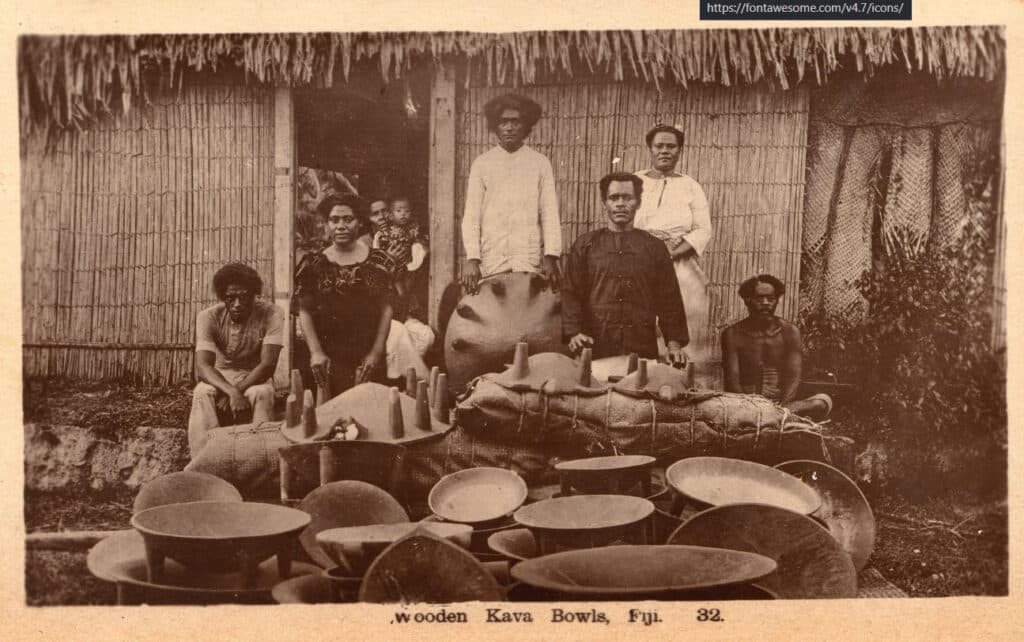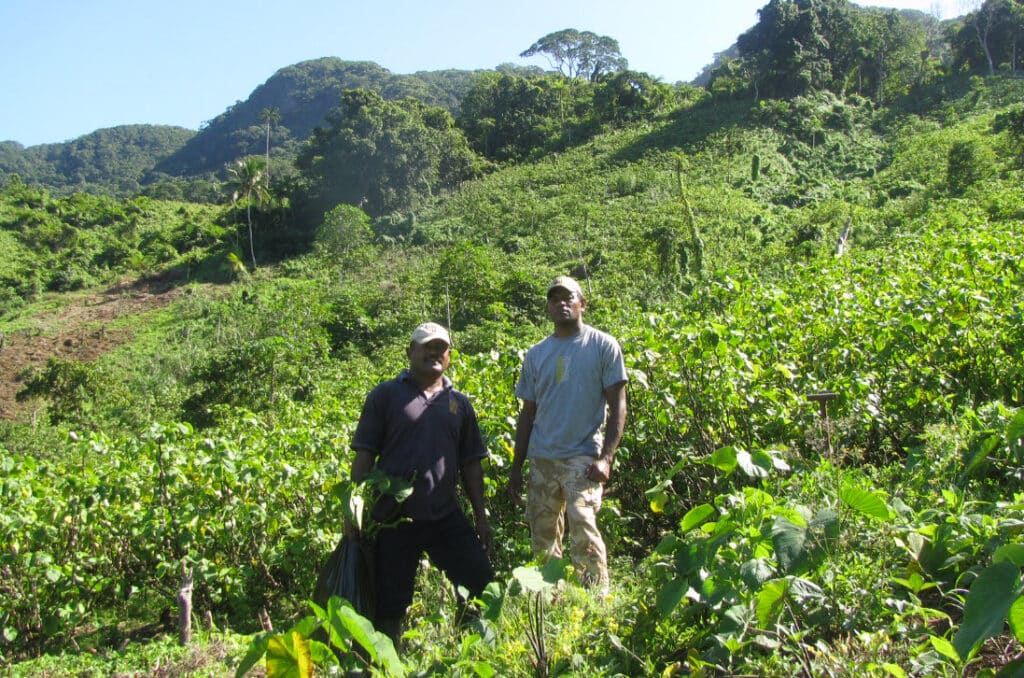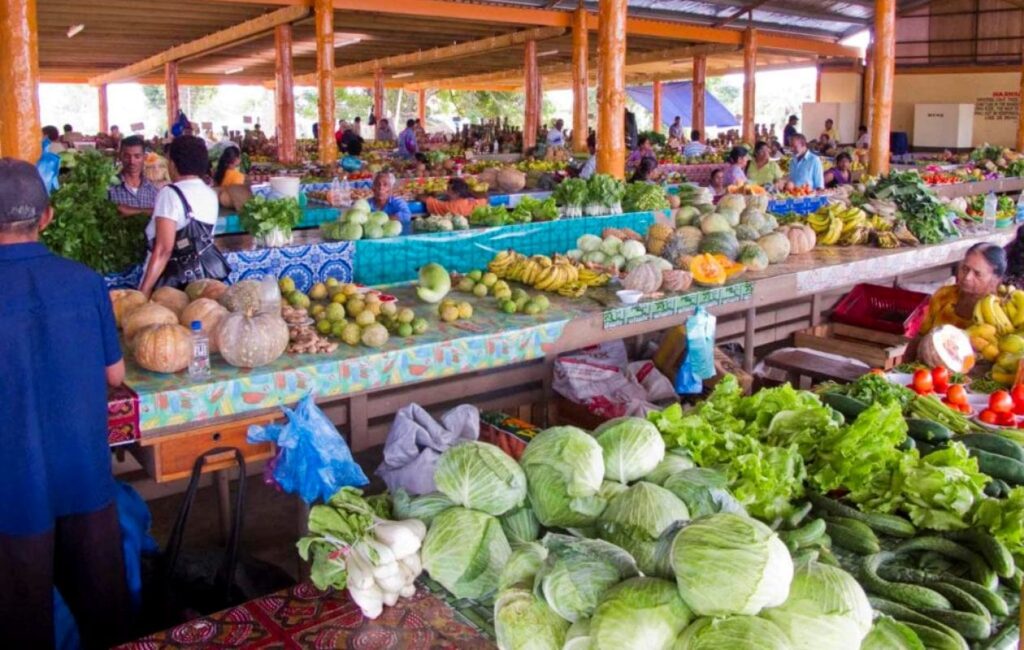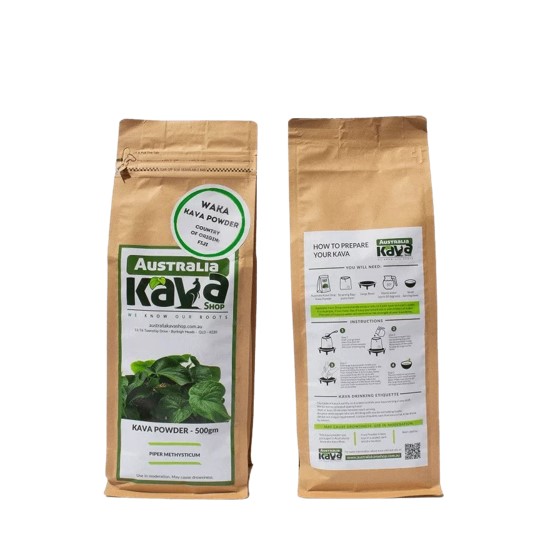Drinking Kava in Fiji
The history of kava in Fiji.

Kava is a traditional beverage in Fiji which has been used for centuries as part of cultural ceremonies and rituals.
The history of kava in Fiji begins with the first settlers who arrived from Polynesia around 1300 AD. Also responsible for bringing coconuts, yams, bananas and taro to Fiji, the plant was brought to the region by these settlers. The first written mention of kava was in 1819 when Captain William Bligh recorded it as being drunk by Fijians.
Custom use of kava in Fiji.

In Fiji, kava is used for a variety of purposes and have been preparing it for centuries. Firstly, it can help with all kinds of ailments from headaches to sore muscles. Secondly, it also facilitates relaxation and unwinding at the end of a long day. Importantly, this social tradition has played a significant role in Fijian culture for centuries.
How kava is grown in Fiji.

In Fiji, the kava plant is grown in both wet and dry areas. In the wet areas, it is grown in the coastal regions, while in drier areas, it is grown inland.
The kava plant requires a lot of water to develop properly, but it also needs good drainage and nutrients to thrive. The soil should be sandy with lots of organic matter to ensure that the roots have everything they need to grow at their best.
Kava plants require lots of sunlight. In fact, you should make sure that they get plenty of sunlight every day! That is – if you want your kava plants to grow as quickly as possible.
Kava - Fiji's biggest export
The kava export market in Fiji is extremely large. In truth, it’s one of the largest in the world. This is because Fiji exports approximately 40% of their kava production to other countries. Also worth knowing is the fact that all kava strains in Fiji are noble variety, unlike some other countries.
Fiji exports kava to countries all over the world, but they focus more on the US and their neighbors than any other nation. The two biggest importers of Fiji’s kava are USA and Australia, who consume roughly 70% of Fiji’s exports.
With exports totalling approximately $67 million in 2017, the kava export market in Fiji is one of the country’s most important industries. Kava’s popularity has been growing steadily since 2012, and it is expected to continue growing due to a number of factors.

Firstly, kava is an evergreen crop that takes about three years to mature. Because of this, it can be cultivated year-round, which means that farmers do not have to rely on seasonal weather patterns for successful cultivation or harvesting. This makes kava farming an attractive option for many farmers. In particular, this applies to those who have been struggling to make ends meet due to poor weather conditions.
Secondly, as more people discover kava’s medicinal benefits, demand is increasing and will likely continue increasing over time. Thirdly, there are currently no other countries that produce kava at such high quality levels as Fiji does. As a result, this means that:
- If another country were to try producing their own kava products, or
- If another country were to try exporting their own ………
- Their products would be inferior in quality and therefore less desirable than those produced by Fiji.
Drinking Kava in Fiji

In modern Fiji, people drink kava for a variety of reasons. These include being part of a religious ceremony or to celebrate the end of harvest season.
According to the Fiji Ministry of Health and Medical Services, “kava is both a traditional herbal medicine and an important social catalyst in Fiji.” It is also used as an alternative treatment for anxiety and depression.
In modern Fiji, kava drinking is most commonly associated with special occasions such as weddings, funerals and other celebrations. Drinking kava together is considered a sign of friendship and trust between those who consume it together. It is the social tonic that binds Fijians of all backgrounds!

